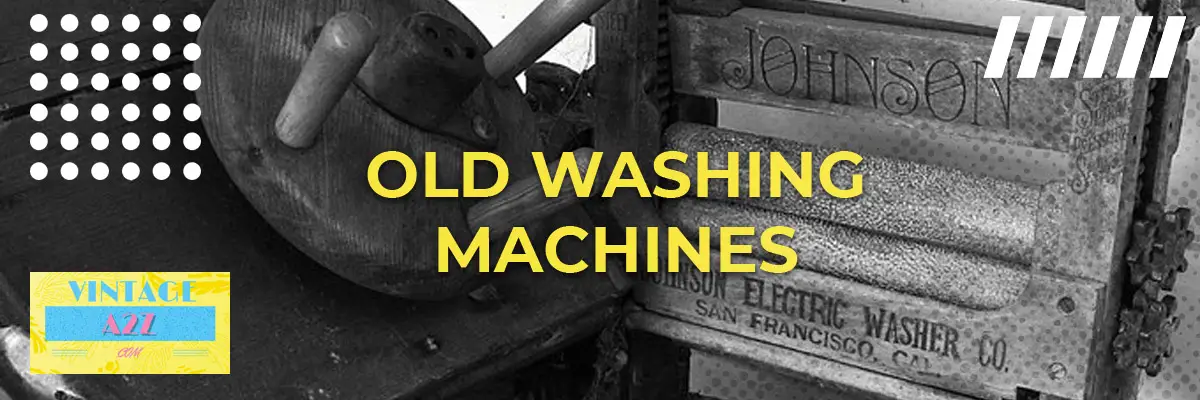Are you curious to know about the history of the washing machine? Before the society-changing entry of front-loader washing machines in the 1950s and its sibling the top loader in the turn of the twenty-first century, were hand-cranked washing machines.
Antique hand crank washing machines have been around for a while and are still currently a feature for people who want to go green or hold onto them for their nostalgic value. Where did all this start?
Where hand crank washing machines began
Until the 18th century, people relied on hand-washing using ash boards and fulling. Then, late in the century, a German professor named Jacob Christian Schäffer had other ideas. In 1767, he came up with the first published designs of the first hand-cranked washing machine.
Schäffer’s design was a drum-shaped invention made of wood that had a vertical broom-like structure in the middle. The middle device had wooden strip ends that looked like a broom or small milking stool. It used a rotating motion to agitate the clothes against the inside surface of the drum.
Other inventors went on to come up with improved versions of the hand-cranked machine. Next was Henry Sidgier who, in 1782, came up with a British-patented rotating drum washer. 75 years later, Hamilton-Smith patented a similar drum that also had a reverse revolution.
Not too long after, in 1874, William Blackstone created the first convenient washing machine for home use. He is arguably the first commercial manufacturer of hand-cranked washing machines made for home use in the United States.
Early hand antique hand crank washing machines
Ever since Jacob Christian Schäffer’s invention in the late 1700s, several versions of the hand-cranked washing machine continued to crop up all over Europe and the Americas. They all featured similar mechanisms, including a drum or barrel structure and a vertical or horizontally mounted and a hand-cranked dolly mechanism in the middle of the drum.
In Europe, Edward Beetham sold improved versions of the washing hand-cranked machines for domestic and commercial use in 1787. In 1797, Nathaniel Briggs of New Hampshire (the first United States patent holder) sold the Box Mangler. However, the Box Mangler was expensive, enormous, and tedious to operate.
Back in Europe, following Beetham’s commercial success, rival companies such as Coates & Hancock came onto the scene. They offered more efficient hand-cranked washing machines and a cash-back guarantee for indifference within the first one month of use.
Almost simultaneously, another rival, Kendal, advertised the Patent Laundress. Kendal focused on improved safety of the washing machine and savings on costs with a more efficient and cheaper washing machine. Cutting on labor costs was a huge selling point for big companies then. That was because people needed to save on the labor required to get laundry done.
Antique hand crank wringer washing machines
In the 1700s, hand-cranked wringer washing machines were uncommon, but this changed at the turn of the 19th century due to competition. As an improvement, the wringing feature was added to hand-cranked washing machines.
The wringing mechanism featured a set of two wooded rollers parallelly placed together, hand-cranked as well, where garments got rolled through to squeeze water out. Early 19th century Manglers came with that classic feature.
In 1843, a Canadian named John Turnbull patented a hand-cranked washing machine with wringer rolls. However, his washing machine failed to get the public’s attention, and its popularity slowly faded away.
Other inventors ventured into hand-cranked wringer washing machines. Notably was James King, who started in the 1850s, and in 1861 his washing machines featured the wringing mechanism.
In 1858, Hamilton-Smith featured a rotating drum with a reverse revolution with a fellow compatriot company, Thomas Bradford, producing hand-cranked wringer washing machines in Greater Manchester.
In 1874, William Blackstone pioneered the first hand-cranked wringer washing machine conveniently made for home use. Before then, hand-cranked wringer washing machines were commercially produced and made for hotels, the navy, or big households. However, William Blackstone’s washing machine ideally worked in smaller homesteads. Setting up a manufacturing company in New York, his washing machines were cheap and revolutionary.
What came next?
All these inventions and improvements to the hand-cranked washing machine laid a foundation for the modern-day washing machine. Initially, antique hand-cranked washing machines featured a drum and a hand-crank mechanism. However, these evolved to a rotating drum and, eventually, the drum became metallic. This allowed for using the drum above a fire for effective hot-water laundering.
Towards the end of the 19th century, washing machines were steam-operated, and during the American industrial revolution they became powered by electricity. Electric washing machines were first produced in the early 20th century.
Frequently Asked Questions
How effective were hand-cranked washing machines?
Initially, hand-cranked washing machines were produced to reduce the laborious task of doing laundry. However, coupled with competition and the need for a much gentler wash for soft fabric such as linen, technology improved. Hand-cranked washing machines, despite their effectiveness, can’t match their modern electric counterparts in thorough washes.
When were hand-cranked washing machines popularly used?
Hand-cranked washing machines featured in households starting in the 1700s. However, initial designs were big, expensive, and impractical for smaller homesteads. The first washing machine conveniently designed for home use accreditation goes to William Blackstone for his infamous birthday present to his wife, which he later commercialized. He gets consideration among the first home-appliance washing machine manufacturers.
Where can I get an antique hand-cranked washing machine?
Most people alive today have probably never even seen a hand-cranked washing machine, but they can still be found. The best source is online on sites that deal in antique collectibles such as Etsy, Ruby Lane, eBay, Craigslist, Catawiki, as well as professional antique dealers. Antique hand-cranked washing machines may be cheap or expensive, depending on the condition and nostalgic value.
Still in use today
Antique hand-cranked washing machines laid the foundation of modern-day washing machines. Their simple technology saved time and effort, allowing it into other ventures that spurred an industrial revolution. They are an important part of our laundry washing history.
Despite centuries passing, the technology in these original machines still applies in modern-day hand-cranked washing machines that people use off the grid to do laundry in places like campers, RVs, and cabins. It’s a technology not about to go out of style anytime soon.

